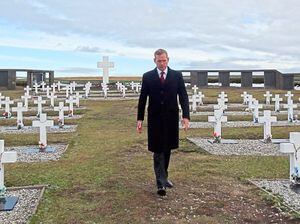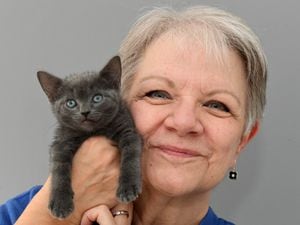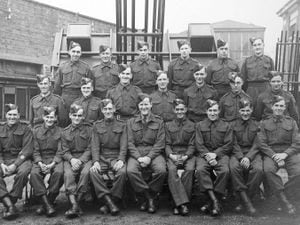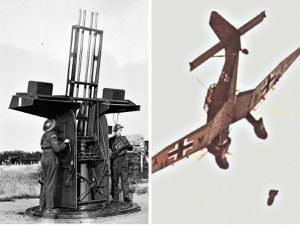The Falklands 40 years on: Tragedy of the graves alone after defeat
Peter Rhodes visited the Falklands in July 1988. Here in an article reproduced fom the time, he saw how even in death, the vanquished struggled for dignity.

The story of the flowers is enough to make your heart bleed. Brook Hardcastle, general manager of the Falkland Islands Company, told it as he entertained us to lunch at his home in Darwin Settlement.
Here, six years ago, high-explosive crashed and tracer flickered through the night sky as the Paras fought their way up the narrow neck of land towards a collection of huts called Goose Green.
The scars remain. Mr Hardcastle points with pride to the bullet holes where stray shots peppered his comfortable, timber-clad house on that extraordinary night. A knocked-out Argentinian gun is on display in his garden, aimed impotently at the sapphire-blue creek where he caught our lunch, a 12lb sea trout, a couple of days ago.
Not far away is the Argentinian war cemetery where the glare from 250 white wooden crosses hurts your eyes as the sun blasts down from a deep azure sky. Some have names. But most of Galtieri’s half-trained conscripts were not even given identity tags and their graves carry the motto: ‘An Argentinian Soldier Known Unto God’.
Most of the British bodies have been brought home. Today, just 25 remain in the neat military cemetery at Port San Carlos, overlooking the landing beaches of ‘Bomb Alley’ where enemy pilots showed such courage. But there is no going home for the Argentinians, not as long as Buenos Aires refuses even to discuss the matter for fear of acknowledging British sovereignty.
Meanwhile, the unending saga of claim and counter-claim to these islands turns even the simplest gesture by heartbroken Argentinian families into a bureaucratic morass.
To send flowers to the graves of Los Chicos de la Guerra (The Children of the War), relatives must first pass them to the Brazilian embassy in Buenos Aires. The pathetic little parcels are then flown 7,000 miles to Britain, handed over to our Foreign Office, put in the diplomatic bag and flown 8,000 miles back to the Falklands.
The Governor, Gordon Jewkes, dispatches them by helicopter to Mr Hardcastle who in turn takes them to the cemetery. The tiny bouquets never have names, he says. Just messages in Spanish like `My Beloved’ or ‘My Little Dove’. So he places them by whichever of the crosses catches his eye. Walk northwards from Brook Hardcastle’s home over the springy, gale-bent heather and you come to a small valley leading from the seashore towards the high ground.
On the left of this valley is a cairn of white stones; on the right, about a hundred yards away, a timber peg driven into the thin earth.
Here, Lieutenant-Colonel ‘H’ Jones, furious and frustrated that the left flank of his assault was bogged down, launched his desperately brave one-man attack. The timber peg marks the trench from which the fatal burst of machine-gunfire came. The cairn shows where Jones fell. The colonel’s grave is at Port San Carlos, a sprig of pink blossom brushing against the VC carved into the headstone. There are a dozen wreaths at the gates, plants on every grave.
For the victors, there is no shortage of flowers from family, comrades and islanders. For the vanquished, unknown in these distant graves, come occasional posies, wilting from the idiotic, unforgivable, 15,000-mile flight that pride and politics demand.





